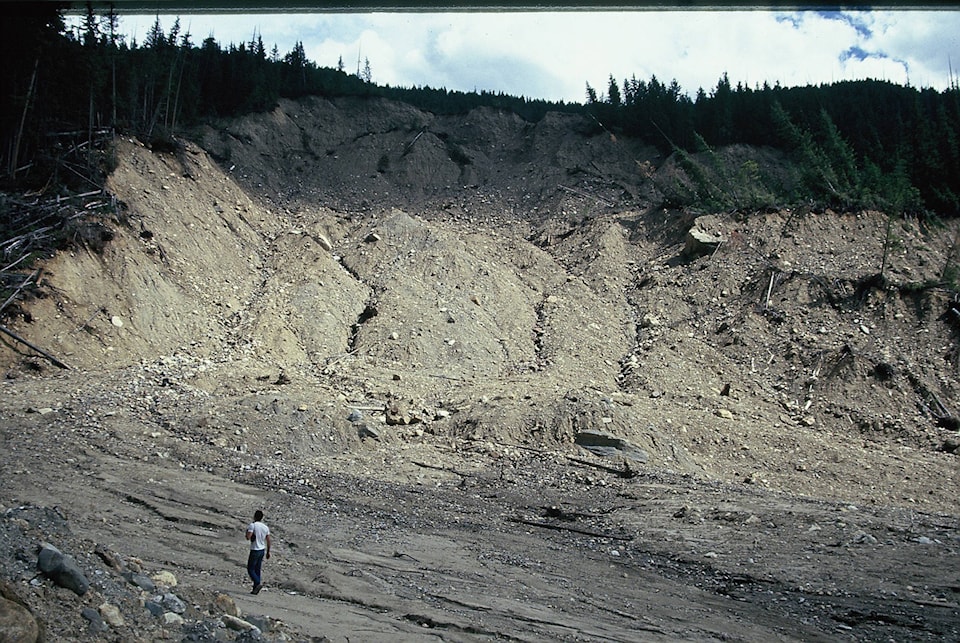Watershed restoration is the focus of a conference in Kamloops from Nov. 13 to 14 at Thompson Rivers University. This meeting is to prepare for a new initiative that is slated to bring many millions of dollars to the province for rehabilitating watersheds and forests impacted by fires, floods and damaging land-use practices. The last time significant funds were invested in restoration was from 1994 until 2002 through Forest Renewal.
The conference at TRU will involve Indigenous leaders, industry experts, government representatives, academics, community officials, and conservationists from British Columbia and throughout North America.
As Bev Sellers, former councillor and chief of the Xat’sull First Nation stated, “Restoration is reconciliation.” The conference will focus on traditional knowledge and ensure that Indigenous rights are integrated into the discussions.
The growing need for restoration becomes apparent every year, as landslides wipe out roads and homes, logging and road building disrupts natural drainage systems, and wildfires scour the hillsides. Restoration will help keep the soil on hillsides to grow natural vegetation and provide habitat instead of washing into streams and silting up salmon spawning gravel. If the public is involved, restoration also can help to build community spirit and fulfill the need to reconnect with nature.
Related: CSRD to map Bastion Mountain to better understand landslide risk
Ecological restoration is the ideal goal, because it attempts to revive natural processes. Rather than try to shorten the rotation of commercial conifer plantations by removing broadleaf trees with herbicides, the aspen and birch should be allowed to flourish. There are many hectares of skid trails, landings and unnecessary roads that need tilling to encourage vegetation regrowth. Planting natural vegetation in riparian areas adjacent to streams and rivers will lower stream temperatures and help prevent erosion.
At a preliminary meeting to the conference, I was asked to identify areas in the Shuswap that need restoration. The first places that came to mind were the many landslides that occurred in the last few years. An inventory of all the slides is needed, beginning with the massive one in 1990 at Fifth Creek that flows into the Anstey River. The inventory should identify the slides that have the best chance to be rehabilitated.
It is not clear if there will be funding available for work on private land. If it is, then work could continue on the Salmon River. Efforts to restore the riverbank began in 1991 under the direction of the Neskonlith Band. The Watershed Roundtable formed in 1994 and by 2014, half of the river was restored. In recent years, work has paused, but new funding could spark action to finish the project.
Related: Study shows glaciers receding
Perhaps the most long-overdue restoration project in the Shuswap is to finally build the fish ladder at Wilsey Dam at Shuswap Falls near Lumby, which has blocked passage for salmon since it was built in 1928. A group of concerned citizens have been promoting the project since the 1970s. In the last two decades a committee formed that, together with the Whitevalley Community Association, has convinced BC Hydro to now support the project, which would provide salmon access to 40 more kilometres of good quality habitat.
After spending $413,000 for studies, the Fish and Wildlife Compensation Program, a partnership of the province, BC Hydro, Fisheries and Oceans Canada, First Nations and public stakeholders, has endorsed the project.
The Wilsey Dam Fish Passage proposal is now in the sixth out of seven steps in the decision-making process. More funding from the proposed restoration program could help finally construct the fish passage, which will increase spawning opportunities and result in greater salmon numbers.
While increasing restoration activities is a worthwhile goal, more efforts are needed to avert further negative impacts from resource development. Fixing the mistakes of the past will only become a repeat of the myth of Sisyphus unless the rules and enforcement are toughened to prevent logging, mining and fossil fuel companies from further damaging the environment.
@SalmonArm
newsroom@saobserver.net
Like us on Facebook and follow us on Twitter
